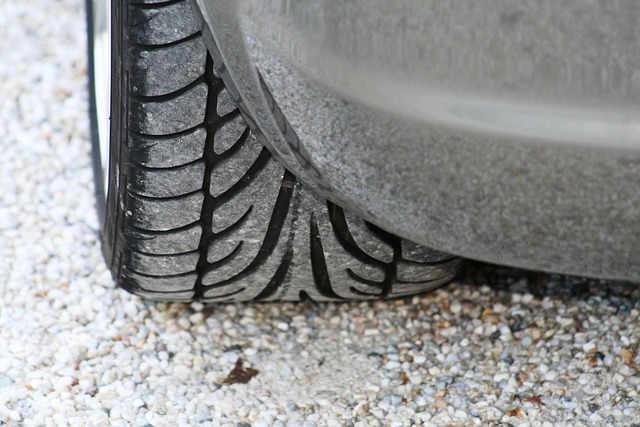Find the Perfect Tires at Affordable Prices
Selecting the right tires for your vehicle involves more than just picking the first option you see. From understanding tire types and specifications to comparing prices across different retailers, the process requires careful consideration. Whether you're replacing worn tread or upgrading for better performance, knowing what to look for can save you money while ensuring safety and reliability on the road.

Choosing tires is one of the most important maintenance decisions vehicle owners face. The right set can improve fuel efficiency, handling, and safety, while the wrong choice can lead to poor performance and premature wear. Understanding tire specifications, seasonal requirements, and where to find competitive pricing helps you make an informed purchase that fits both your vehicle and budget.
Explore Tire Options Online
The internet has transformed how consumers shop for tires, offering convenience and transparency. Online retailers and manufacturer websites provide detailed specifications, customer reviews, and filtering tools to narrow down choices based on vehicle make, model, and driving conditions. Many platforms allow you to compare multiple tire models side by side, examining tread patterns, warranty coverage, and performance ratings. Virtual tire selectors simplify the process by automatically displaying compatible options when you input your vehicle information. Some websites also offer installation scheduling at local partner shops, combining the ease of online research with professional service. Reading verified customer reviews helps gauge real-world performance in various weather conditions and driving scenarios.
Tire Selection Guide
Understanding tire terminology and specifications is essential for making the right choice. The sidewall of every tire displays a code indicating size, load capacity, and speed rating. For example, a marking like P215/65R15 95H tells you the tire width, aspect ratio, construction type, rim diameter, load index, and speed rating. All-season tires provide year-round versatility for moderate climates, while winter tires feature specialized rubber compounds and tread designs for snow and ice. Performance tires prioritize handling and responsiveness, ideal for sportier driving styles. Touring tires balance comfort, longevity, and quiet operation for daily commuting. Consider your typical driving conditions, climate, and vehicle usage when selecting a tire category. Tread wear ratings indicate expected lifespan under normal conditions, with higher numbers suggesting longer durability. Traction and temperature grades reflect wet-weather performance and heat resistance, both critical safety factors.
Guide to Buying Tires
Once you’ve identified suitable tire options, comparing prices and purchasing channels becomes the next step. Prices vary significantly based on brand reputation, performance characteristics, and retailer markup. National tire chains, independent shops, online-only retailers, and warehouse clubs all compete in this market, each offering different advantages. Some retailers include free installation, balancing, and valve stems with purchase, while others charge separately for these services. Manufacturer rebates and seasonal promotions can reduce costs substantially, sometimes offering discounts of $50 to $100 per set. Always verify what’s included in the quoted price—mounting, balancing, disposal fees, and alignment services can add $80 to $150 to the total cost. Warranty coverage differs among manufacturers, with some offering mileage guarantees ranging from 40,000 to 80,000 miles. Road hazard warranties provide additional protection against punctures and damage, though they typically cost extra.
Real-World Pricing and Provider Comparison
Tire prices span a wide range depending on size, brand, and performance category. Budget-friendly options for compact cars may start around $60 to $90 per tire, while premium performance or truck tires can exceed $200 to $300 each. The following table provides estimated pricing across different retailers and tire categories to help guide your research:
| Tire Category | Retailer/Provider | Estimated Cost Per Tire |
|---|---|---|
| Budget All-Season | Discount Tire | $65 - $95 |
| Mid-Range All-Season | Costco Tire Center | $90 - $140 |
| Premium All-Season | Tire Rack | $130 - $180 |
| Performance Summer | America’s Tire | $150 - $220 |
| Winter/Snow | Sam’s Club | $100 - $160 |
| Light Truck/SUV | Walmart Auto Care | $110 - $200 |
Prices, rates, or cost estimates mentioned in this article are based on the latest available information but may change over time. Independent research is advised before making financial decisions.
Beyond the tire cost itself, factor in installation expenses. Most retailers charge $15 to $30 per tire for mounting and balancing, plus disposal fees for old tires averaging $3 to $5 each. Some membership-based retailers like Costco include lifetime rotation and balancing with purchase, adding long-term value. Online purchases often require shipping to a local installer, so confirm total costs before committing. Mobile tire installation services have emerged in recent years, bringing convenience directly to your home or workplace, though they may charge premium rates for this service.
Maximizing Tire Lifespan and Value
Proper maintenance extends tire life and ensures optimal performance throughout their service period. Regular rotation every 5,000 to 7,000 miles promotes even wear across all four tires, preventing premature replacement. Maintaining correct inflation pressure, as specified in your vehicle’s door jamb or owner’s manual, improves fuel economy and prevents uneven tread wear. Under-inflated tires wear faster on the outer edges and generate excess heat, while over-inflation causes center wear and harsh ride quality. Alignment checks after hitting potholes or curbs prevent steering pull and irregular wear patterns. Visual inspections for cuts, bulges, or embedded objects help catch potential problems before they lead to blowouts. Tread depth gauges or the penny test can determine when replacement is necessary—most experts recommend new tires when tread depth reaches 4/32 of an inch, though legal minimums are typically 2/32.
Conclusion
Finding the right tires at competitive prices requires research, comparison, and understanding of your specific needs. By exploring options online, learning tire specifications, and comparing providers, you can make an informed decision that balances cost, performance, and safety. Remember that the cheapest option isn’t always the best value—consider total cost of ownership, including installation, warranties, and expected lifespan. Taking time to evaluate your choices ensures you’ll drive away with tires that serve you well for thousands of miles ahead.




